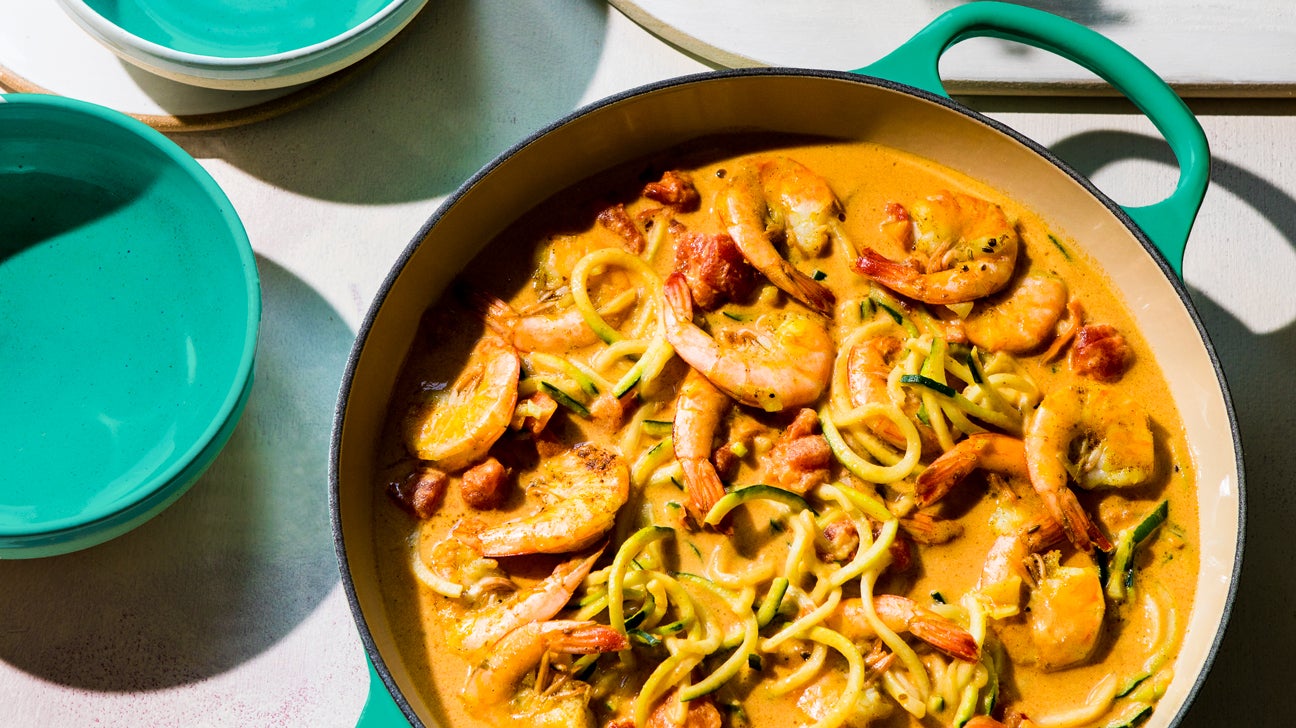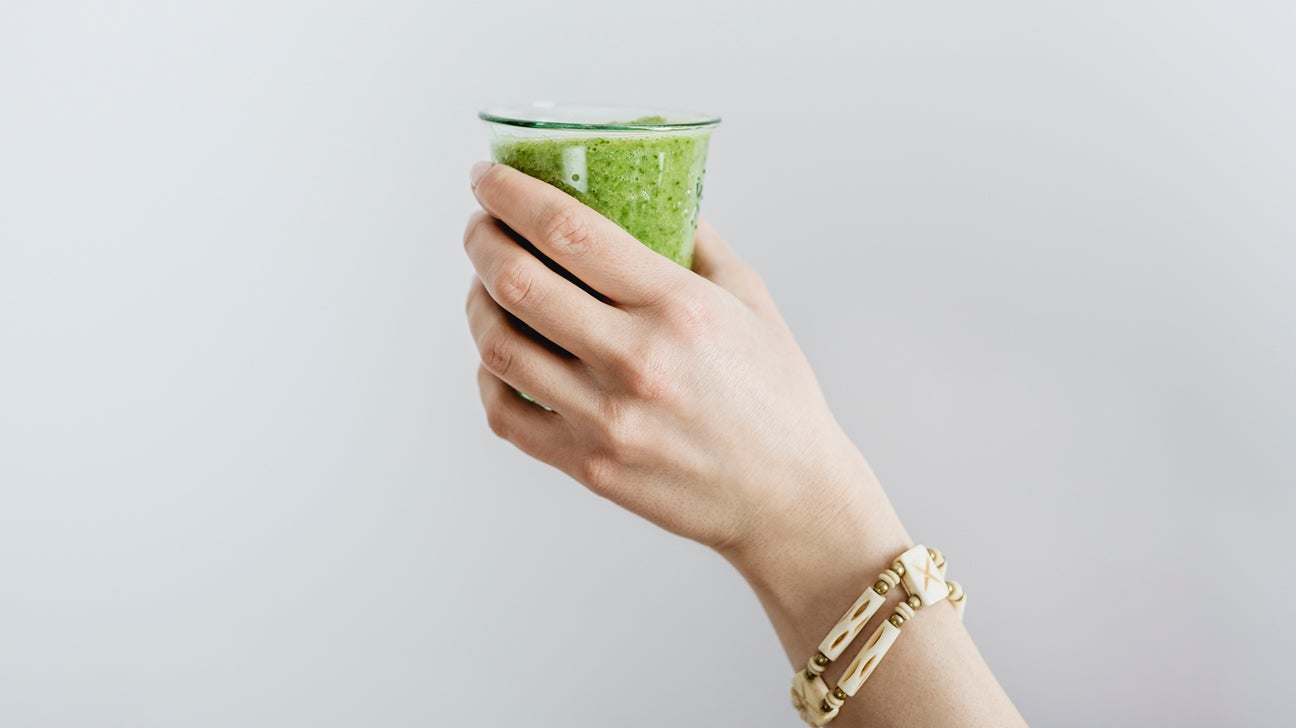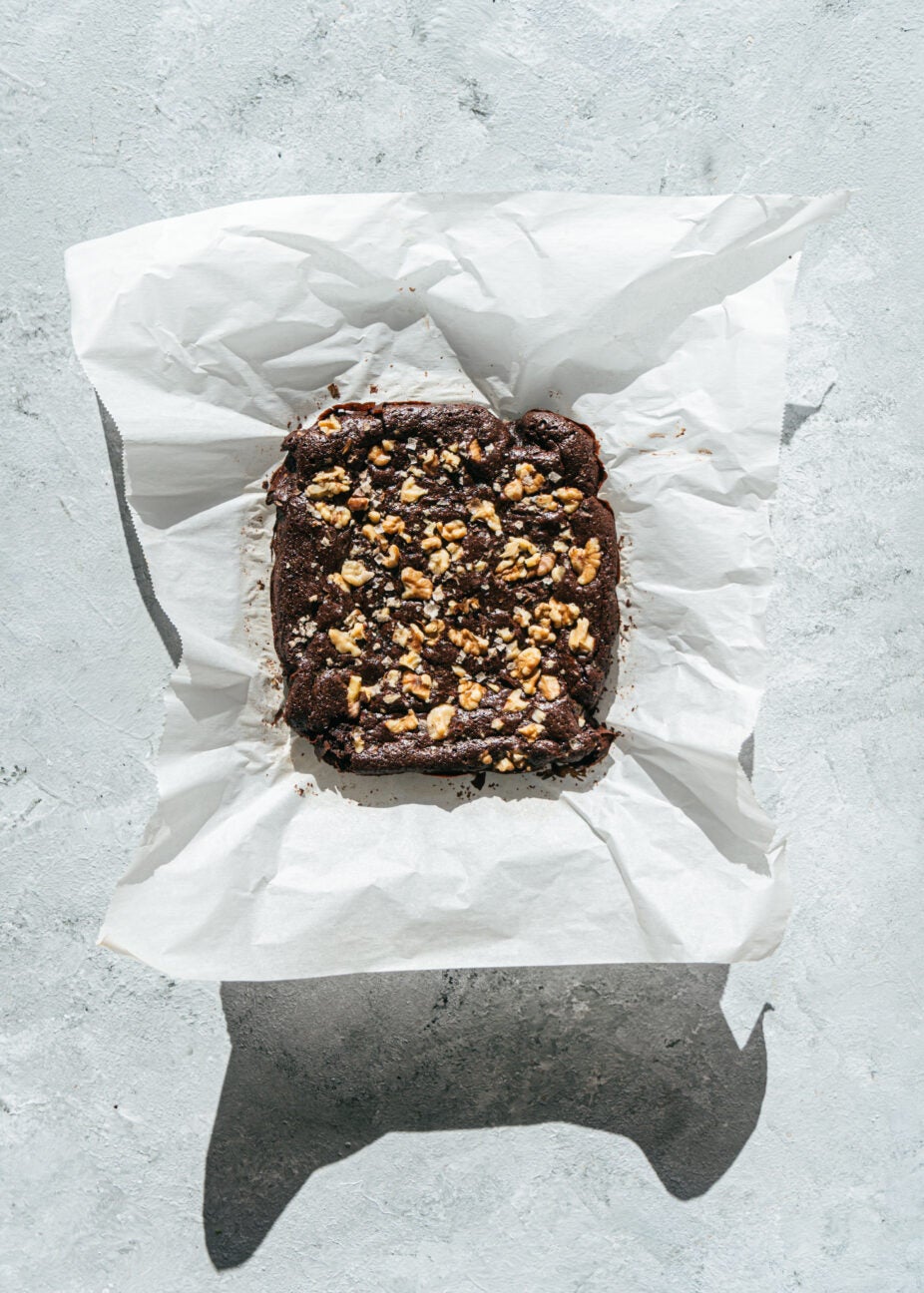Even for those who like eating veggies, it can be a challenge to eat the recommended servings each day. And when a craving for creamy mac and cheese calls, it’s tough to ignore a grumbling tummy and cheese cravings and opt for a bowl full of veggies instead.
We’re here to tell you it’s easy to have the best of both worlds! Here are our 40 favorite (sneaky) ways to fit veggies into any meal:

How to eat more vegetables for breakfast
1. Frittata it
We love starting the weekend with an egg-heavy brunch. Eggs have gotten a bad rep for their high cholesterol content, but they’re also a good source of protein and choline. So, feel free to add them to your menu, provided you eat them in moderation.
Mix eggs with veggies for a healthy and hearty breakfast. You get bonus points if you make enough to munch on all week!
2. Add minced broccoli to scrambled eggs
This veggie addition doesn’t change the texture of the eggs. Plus, it squeezes in an entire serving (at least) of green veggies.
3. Mix cauliflower into scrambled eggs
Steam and puree or finely grate cauliflower to mix with scrambled eggs. This cruciferous vegetable adds very little fat, but lots of vitamin C, folate, and potassium. For a later-in-the-day meal, combine cauliflower with chicken or tuna salad.
4. Bake with ’em
Breakfast sweets are a good vehicle for veggies too. Bake bran muffins with zucchini and carrots, in addition to the classic raisins, walnuts, and cinnamon.
5. Veg out on savory oatmeal
Regularly including whole grains like oatmeal in your diet might help reduce your risk for heart disease, research suggests. Tang G, et al. (2014). Meta-analysis of the association between whole grain intake and coronary heart disease risk. DOI: https://doi.org/10.1016/j.amjcard.2014.12.015 Loading up your oatmeal with brown sugar won’t do your heart — or your waistline — any favors, but oats can be savory too!
Cook plain oats with water and add your choice of steamed or sautéed veggies. Top with an egg for extra protein and season with salt, pepper, or a sprinkle of Parmesan cheese.
6. Make pudding a healthy breakfast
If it’s avocado-based, that is. Avocados add a creamy texture, along with cholesterol-lowering plant-based nutrients called phytosterols. They’re also loaded with potassium, an electrolyte that helps relax blood vessels, and thus reduce blood pressure.
7. Try pumpkin or butternut squash pancakes or waffles
While the skillet is heating, throw some pumpkin or squash puree into pancake or waffle mix. You’ll sneak in a whole extra serving of veggies and add a fun orange glow to your breakfast.
Smoothies

8. Add greens to breakfast smoothies
A handful of spinach or kale blends well with any fruit smoothie. Try the classic Green Monster. Blend 1 cup milk (we love almond milk!), 1 frozen banana, 2 handfuls spinach, and 1 tablespoon almond butter.
9. Grab an avocado smoothie
Like the green smoothie, this avocado-based treat is perfect for breakfast or a nutritious snack. Packed with healthy fats, vitamin E, and vitamin B6, avocados are one superfood we love to liquefy.
10. Slurp a carrot smoothie
Carrots are an excellent source of beta-carotene, an antioxidant your body converts to vitamin A. But you don’t need to munch them Bugs Bunny-style to take advantage of their nutrients.
Carrot juice is pretty easy to find, but without a juicer at home, it’s tough to make. Luckily, grated carrots are easy-peasy to fit into any fruit smoothie. Bonus: Because you use all parts of the veggie, none of the fiber is lost from the juicing process.
Pasta and grains
11. Make pasta go green
When spaghetti and meatballs is on the menu, toss some extra veggies (like spinach and mushrooms) into the dish. They’ll give you more nutritional oomph than the traditional side salad.
12. Experiment with veggie noodles
Use a spiralizer or julienne tool to create zucchini, squash, asparagus, or cucumber noodles and skip the pasta altogether. (Or roast spaghetti squash!)
These “zoodles” are lower in carbs and higher in nutrition than regular old white pasta. Add extra veggies to the sauce to bump up your nutrient dose even more.
13. Remember, herbs are leafy greens too
We dice herbs into our food mainly to add flavor, but these greens are no nutritional slouches. Basil, oregano, sage, and thyme are high in antioxidants that might protect against diseases like cancer.
Add fresh herbs to any rice, pasta, or grain dish. Or whip up a quick homemade herb pesto to add to scrambled eggs or use as a sandwich spread.
14. Get fancy with mac and cheese
It’s a childhood favorite, but grown ups love it too — don’t lie! When a craving for this creamy dish sets in, give it a mature (and healthy) makeover by mixing in some spinach, tomatoes, peas, or broccoli.
Pro Tip: Cooking it from scratch with whole-grain pasta makes it not only better tasting, but better for you, too.
15. Make a potato mash-up
Rather than eat plain old white mashed potatoes, mix in some yams. You’ll add a hint of sweetness, plus a serving of beta-carotene.
16. Sneak them into casseroles
Anytime that casserole dish comes out of the cupboard, get the grater out too. You can add finely shredded zucchini or summer squash to virtually any casserole without changing the taste or texture!
Sandwiches
17. Sub greens for wraps
Lettuce makes a surprisingly good stand-in for bread and tortilla wraps. You can also use tougher (and more nutrient-dense) greens like collards, kale, or chard. Just blanch the greens and pat them dry before wrapping.
18. Add veggies to grilled cheese
Melted cheese between two slices of bread is pretty lacking in nutrition. To bump up the health content, add in a few layers of veggies. Spinach, tomato, and avocado add iron, lycopene, and healthy unsaturated fats into the mix.
19. Make vegetarian quesadillas
Replace the classic chicken-and-cheese variety with veggies like corn, red and green peppers, onions, and spinach. Try even adding some black beans for more fiber. Cutting the amount of cheese in half saves on both calories and saturated fat.
20. Bulk up burgers
Eating lots of red meat isn’t great for your heart or your longevity, research finds. Zhong VW, et al. (2020). Associations of processed meat, unprocessed red meat, poultry, or fish intake with incident cardiovascular disease and all-cause mortality. DOI: 10.1001/jamainternmed.2019.6969 Cut back on the meat content of your burgers and other meat-based recipes (like meatloaf) by bulking them up with carrot puree or chopped mushrooms.
Sauces and condiments

21. Try pumpkin marinara sauce
Tomato sauce is a great vehicle for any extra pureed veggies. The easiest addition (and our personal favorite)? A can of pumpkin puree!
Like sweet potatoes, pumpkin owes its brilliant orange hue to beta-carotene. When your body converts this antioxidant into vitamin A, it protects your eyes, skin, and bones alike.
22. Be saucy
Basic tomato sauce is great — it definitely counts as one veggie (as well as one fruit — it’s both)! But the more veggies you add, the better. Also include pureed carrots or winter squash, peppers, onions, or greens.
23. Health up the hollandaise
Few things are better than a Sunday-morning plate of eggs Benedict, but classic hollandaise sauce can be less than healthy. It’s loaded with butter, plus raw eggs that could give you a nasty case of Salmonella if they aren’t pasteurized.
Make it healthier — and safer — by swapping out low fat yogurt for the butter and eggs. Add avocado to squeeze in some extra green.
24. Puree away
Mix butternut squash puree and grated cheese to create a rich and tasty spread. Use it on grilled cheese, quesadillas, or pizzas.
25. Spice up salad dressing
Say bye-bye to classic oil and vinegar and hello to veggie-based dressings. Some ideas include butternut squash, avocado, tomato, beet, or zucchini.
Snacks
26. Bake an egg in an avocado
The avocado takes the place of starchy toast. It makes the perfect healthy vehicle for some serious protein!
27. Turn them into fries
Who said only potatoes dipped in oil make good fries? Lighten up these sandwich accompaniments by slicing up some zucchini, avocado, carrots, or green beans. Lightly bread them, or roll in cornstarch and cornmeal, and bake (not fry!) until crispy.
28. Cook up kale chips
This leafy green is popular these days, and for good reason. It contains an alphabet-full of nutrients: vitamins A, C, B6, and K. Lightly coated in oil and sprinkled with salt, crispy kale chips are a much healthier stand-in for potato chips.
Pizza
29. Serve a colorful pie
Yes, the traditional cheese, sauce, and crust pizza is hard to pass up. But pizzas are also a great vehicle for a big pile of veggies. Practically anything works, from spinach and tomato, to roasted squash or root vegetables.
30. Prepare a pizza salad
Why exile your salad to the side? Make it part of the main attraction by piling it on top of your pizza. Arugula salad with tomatoes and Parmesan makes a good topper for a mixed veggie pizza.
31. Splurge on spinach
Tomato sauce is a great way to get in a serving of veggies. Even better? Spread a layer of spinach puree on the pizza dough before topping with sauce to add another dose of veg (and extra greens).
Soups and stews
32. Add veggie puree to chicken soup
Cooking classic chicken soup? Add a can of pureed tomatoes, squash, beans or potato. It will make for a thicker soup while sneaking in some extra veggies.
33. Spice up chili
Who said chili has to be just meat and beans? Add carrot, sweet potato, or butternut squash puree to your recipe. Or skip the beef entirely, and make meatless chili with peppers, beans, tomatoes, and corn.
Baked goods and desserts

34. Bake veggies into bread
One clever way to sneak veggies into breakfast is by baking them into sweet breads. Zucchini is always a favorite, but squash, carrots, and beets also make good bread additions. Add some berries for a splash of color and a zing of tartness.
35. Disguise greens in dessert
Hide pureed spinach or zucchini in your brownie batter, or make carrot and zucchini bars with lemon frosting. You’ll get in an extra serving of greens, but the sweet flavors will trick your mouth into thinking you’re eating a decadent dessert!
36. Hide carrot and squash in your chocolate cake
A chocolate cake base is the perfect place to disguise the veggies packed into the batter. Top it with avocado frosting for even more veggie bonus points!
37. Pair chocolate with beets
Bake beets into cake. The cocoa covers the earthy flavor so well, you’ll barely realize you’re doing your heart good by eating it. Plus, the sweetness of the beets pairs nicely with the sugary cake.
38. Shake up your milkshakes
Smoothies aren’t the only frozen concoctions that deserve a healthy reputation. You can easily blend spinach, carrot juice, and sweet potatoes into a chocolate shake. Chocolate helps hide the veggie taste in pretty much anything.
39. Upgrade cookie dough
Add carrot or sweet potato puree to chocolate chip cookies. You’ll end up with a treat that’s just as tasty, but has all the benefits of beta-carotene, too.
40. Add avocados to pudding
Yes, we can even sneak extra nutrients into chocolate pudding. Avocados’ silky texture blends perfectly into pudding or ice cream.
Bottom line
Turns out, vegetables are a lot more versatile than we often give them credit for. You can slip them into just about anything you’re making for dinner and dessert, boosting the health value of meals for you and your dinner companions.
from Greatist Health RSS Feed https://ift.tt/3mmGnkj

No comments:
Post a Comment